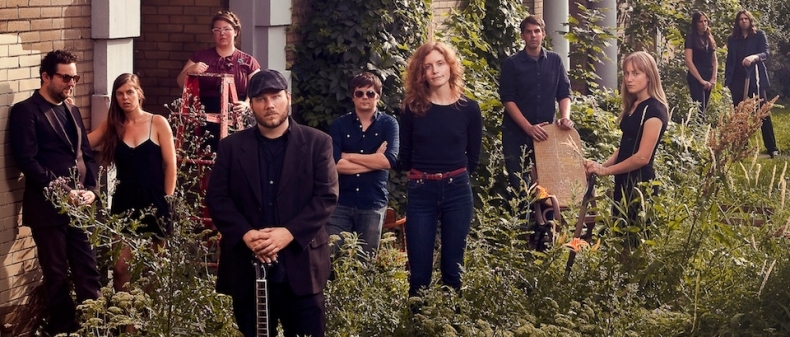
There was something wrong with a mole on my partner’s back; it had always been large – a flat, pinkish nevus about the size of a twoonie on his right shoulder. I couldn’t actually explain how I knew that something in it – the way the cells were dividing – was no longer benign, but it suddenly started looking wrong to me. The smooth edge of it became a little frayed, the colour uneven, and what once looked like a rose petal fallen onto his back suddenly began to brown, wilt, become poisoned.
At first, I kept my worry playful. I named the mole “Moliarty” and gave it a nefarious personality. Soon though, I started to harass him about seeing a dermatologist more seriously. While I had initially begun referring to the mole as a villain in jest, over time it grew more visibly malevolent, squatting possessively on my partner’s beautiful skin. I started to have nightmares about him being ill, or hurt, or, once, the mole speaking to me, whispering threats. I became unbearably annoying in my campaign to get him to the doctor. In sheer exasperation, he asked his GP for a referral.
The moment his dermatologist saw his back she was reaching for the phone to schedule a removal. Despite the clutter and delay that can characterize getting medical treatment in a big city, the procedure was scheduled to take place in a matter of days. Suddenly, we were Googling “malignant melanoma,” talking about treatment options and long-term care plans.
In the end, it would take two surgeries to dig the cancer out of his back, as seed cells had spread deep into the skin and muscle surrounding the growth, gripping his flesh like a talon. Plus, a third surgery took place a few weeks later to take out another, smaller mole that had gone rogue on his inner left thigh. The chunk of skin on his shoulder they had excise was larger than a pack of playing cards. I got very good at wound care. His skin knitted slowly and split frequently once the stitches were removed, gradually widening while the wound knitted into a thick, purple keloid knot.
We caught the cancer before it spread too deeply, and so he avoided chemo, but his skin requires constant vigilance now. I have built a mental map of every divot, dimple and beauty mark on his body, and check them often out of a fearful obsession that somewhere deep in a cell’s engine a mitochondrial switch will flip and the good skin will start to go bad. The worry – the constant dull horror of a disease you can’t yet see – is exhausting.
Cancer has touched my life repeatedly this year. A close family member is currently undergoing a combined course of radiation and chemo for a stubborn tumour that has returned years after an initial remission. Cancer will not keep its claws out of my friends – more than one are engaged in their battles with treatments that often make them gravely ill or surgeries that change the landscape of their bodies. I still have nightmares about my partner’s mole speaking to me.
When the night of listening party arrived, a crisp Saturday evening in mid-March, I almost didn’t go. Despite the civilized hour (the event kicked off at 8 p.m.), the promise of cheap wine and the comfortable setting of the Campbell House museum, I nearly let the stress of the previous few months get the better of me, as it did for several of my professional and personal obligations at the time. But I went, if only to get gauze and I.V. drips out of my head for a few hours, to sit and listen.
I walked into a full, intimate room at the top of the Campbell House’s twisting staircase, lit gently by a row of candles on the back mantle. There were about 50 people perched on folding chairs arranged in neat rows within the space, many of them balancing half-full glasses and leaning into each other. I took a seat at the back, alone, just in time to hear Neil Haverty, who was performing by himself while fellow band members Misha Bower and Matt Cully (who together perform as Bruce Peninsula Trio) stood by, admitting almost shyly that he was going to play a few songs about recovering from his battle with Leukaemia.
He didn’t intend to write music about it, he assured us, but during the recovery process and after, as he gained strength and confidence, the experience ended up pushing its way out musically. The few numbers he performed were raw, fragile things – hollow-boned and soaring – without the folksy, gospel-infused strength that defines so much of Bruce Peninsula’s music. His voice often trembled – it was visibly hard for him and made him acutely self-conscious – but there was a sense that performing these nascent songs he was still so uncertain about was important, even defiant.
He sang about vulnerability and strength, about his hospital roommate Richard Castro (an immigrant from the Philippines who was getting ready to bring his family to Canada prior to his illness), about letting go of stress and focussing on what is really important (“sometimes, when someone is stressing out, I just want to grab their arm and send them all the calm energy I have in my body. That probably sounds really weird”).
Haverty was diagnosed with cancer in the final weeks of 2010, right before the band’s sophomore release, Open Flames, was due to be released. Because of his treatment and recovery, the record was delayed until October 2011. Haverty says that, “When I got sick, I obviously had to drop everything else. I didn’t make music in the hospital and suffered bad migraines after that, so I stopped singing altogether.” The goal of releasing the record and touring was one that kept him going, but even after his health improved the recovery process took much longer and was more complex than expected. “The wake of being ill has arguably been stranger than the actual illness, because everything goes back to ‘normal,’ but nothing feels exactly the same.”
Inevitably, Haverty turned to songwriting as a way to deal with the physical and emotional fallout from his illness. “I’ve always used songwriting as a sort of clearing house for feelings like that. It slowly crept up on me and all of the sudden I had a bunch of new songs.” It was also part of the process of rebuilding his relationship with his primary instruments: his voice and guitar. He also employed a very different songwriting process for this new material than he typically does with Bruce Peninsula. “I realized it was about getting reacquainted with my guitar. I’ve really relied on extensive demoing in the past, [using] skeleton electronic beats that would later be replaced, layers of harmonies, etc. But I’ve been adverse to interfacing with my computer lately. This is the first set of songs that I’ve written front-to-back with just guitar and voice since I was a teenager. In my case, the songs turn out stranger that way because I’m not constantly playing parts back, tucking things in or tweaking them with a mouse.”
The results are sparse, feathery pieces aching with fragility, while at the same time wielding a deceptive strength. They mimic spider webs in many ways: comparatively stronger than silk, but always at risk of being blown away. Whatever they may be, Haverty is adamant that they are not, really, Bruce Peninsula tracks, explaining, “the content of these songs is exceptionally personal. This subject matter and the way I was writing didn’t feel right to bring to the group.” Instead, he performed these pieces here, himself, with his friends and bandmates next to him.
Haverty wasn’t the only band member using the Listening Party event as an opportunity to experiment and trust the audience with new material. Misha Bower and Matt Cully performed “I’m All About,” a song intended for the audiobook release of her first collection of short stories, Music for Uninvited Guests (Cringles 2012). The track “doesn’t intentionally correspond to a story in the book,” Bower explains, but is more of “a simple, multi-purpose love song about accidentally sabotaging a relationship by unknowingly bullshitting yourself.”
Throughout the set, the trio of Haverty, Bower and Cully played in several configurations: Haverty alone; Cully accompanying Bower as she sang; and Bower and Haverty singing a duet while Cully played. But the most joyous and complete moment happened at the very end of the set when all three band members performed sweet, summery number “The Swimming Song” together. While it was the bare accompaniment and vocal focus that gave this set a great deal of its intimacy and closeness, this song came closest to the choral energy that characterizes much of Bruce Peninsula’s work. They performed it with pleasure and love; it was a bright spot of warmth on a still-frozen spring night.
When asked about what allowed each of the band members to open up in the ways they did, Matt Cully offered that it was the combination of the energy and audience acceptance, as well as the exceptional location. “Whenever an opportunity comes along to play a special kind of venue like the Campbell House, it’s really a no-brainer. The setting can really inform the quality of the performance and open the audience up to respond to the material in a unique way. [Also] the audience seems to bring as much to the performance as the artists; we felt relaxed and [so] the stories we told were spontaneous and honest.”
I wasn’t any less exhausted when I left the Campbell House Museum than when I arrived, but I was less troubled. I would have felt the same lightness if I’d spent the evening in conversation with a good friend. It’s rare that a performance is able to touch something that is not only intimate, but healing.
____
Natalie Zina Walschots is a poet and music writer based in Toronto, Ontario. Her second book of poetry, DOOM: Love Poems for Supervillains, was published by Insomniac Press this spring. You can follow her on Twitter at @NatalieZed.
For more, follow us on Twitter at @torontostandard, and subscribe to our newsletter.














